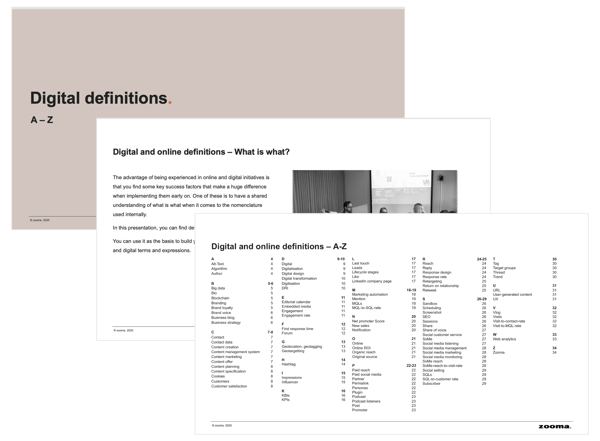
Online Strategist at Zooma since 2012. 15+ years of experience as a manager, business developer and specialist within online and e-commerce.
Keep me updated!
Subscribe

As companies mature with the inbound methodology, they all eventually reach a point where they start to ask themselves if gated content is as effective as it used to be? This article outlines Zooma's view on the gated vs ungated content debate and insights into how we reason ourselves and advise our customers.
It’s time to talk about the elephant in the room: Gating content. Historically there has been a direct correlation between the number of landing pages (content offers) and the number of new leads, as showcased by, e.g. HubSpot in 2013 in the HubSpot Marketing Benchmarks from 7000+ businesses 2013 report. Hence, using gated content has been a core feature for anyone working with inbound marketing and sales.
However, the world tends to change after a while and move on to other more successful ways of approaching things. Gary Vaynerchuk described it as a case of “Marketers ruin everything”; all tactics after a while get over-used and over-optimised by marketers because that’s our job (yes, I count myself in!). Are we perhaps at that “tipping point” with gated content?
Marketers ruin everything
- Gary Vaynerchuk, #INBOUND 2016
Since 2018-2019 we’ve observed more people talking about the beginning of a shift, both with brands and agencies. That shift consists of mainly four components or assumptions:
So what does the above mean? Well, we’ve probably seen “peak gated content”. Like linear TV ads and other “post peak” tactics, gated content will gradually decline. How fast, however, is up for debate. At Zooma, we would argue that testing and basing your decisions on data - as always - is core along the way to get your timing right. But for starters, there are some easy adjustments that everyone should consider.
First and foremost; gating content is about gating the right content. For example, there is less reason to gate educational content (e.g. blog posts), because you fill your database with contacts that are not yet ready to buy. On the other hand, only using ungated content will result in a high bounce rate and a lesser likelihood of analysing the visitors’ next intent and next step. So how do you balance this equation?
In the example above, best practice would be having an (educational) article describing a subject and then providing a template as a content offer, so that the visitor can download and apply in practice what they just learned from the article. Offering the article itself as a downloadable document isn’t as helpful (as they have already consumed the content) unless it is the presentable format itself, that adds significant value.
Below are the best practice rules you can apply when considering gating and ungating content.
Extremely high-value content (e.g. price list):
Gated content that is already performing well:
Complement existing ungated content with an offer:
When you need to increase (organic) traffic:
When your gated content isn’t performing well:
When you ungate content, also consider these best practices:
To help you further, here is an example from Zooma, where we decided to ungate what was previously a content offer.
A while ago, we published an article about 'digital definitions' and the importance of talking about the same things when it comes to online and digital. We added a gated PDF content offer, with digital and online terms that we use at Zooma (see below).

After a while, we ungated the PDF and populated digital definitions on a webpage with a gated PowerPoint presentation (see below). Thus, readers can have direct access to the terms and, if they wish, download the terms as PowerPoint and use them internally with their branding.
Did this article make you curious about inbound? If you’d like to read more about inbound, read our comprehensive Inbound guide covering the why, what and how of Inbound, and it's also available for download!
